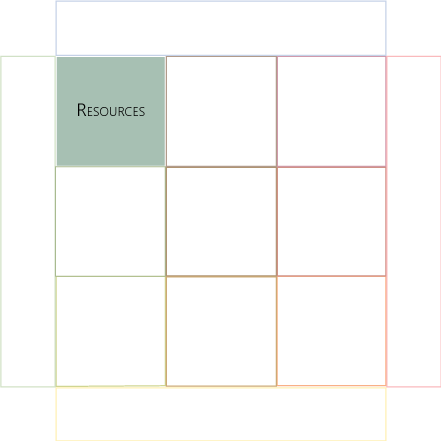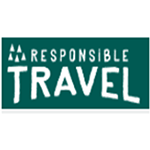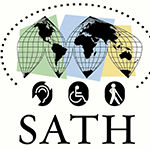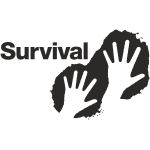
Resources: Experience Unprecedented Success revealing your essential Resource

Resources
19 Guiding Questions for Thriving Tourism Businesses: Accelerate Your Journey to Excellence
Key to Success
In this section, we would like to make sure that Small and Medium-sized Tourism Enterprises (SMTEs) should be aware of the following:
- The importance of resource management in promoting sustainable tourism includes managing resources to contribute to the long-term sustainability of destinations and communities.
- Attracting and retaining skilled and motivated employees, providing training and development opportunities, and creating a positive workplace culture to enhance the quality of their offerings and the Traveler experience.
- The role of financial resources in supporting tourism development includes securing funding and investment, managing finances effectively, and creating sustainable business models.
Accomplishments
In this step, we’ll:
- Identify which assets are essential to creating and delivering traveler value.
- Highlight which supplies are critical to making our business work.
- Find our critical resources and most efficient processes to get:
- Our Unique Value Proposition (UVP)
- Our Unique Selling Proposition (USP)
Time-Saving Tools
We’ll complete all sections of this chapter more quickly if we have any of the following handy:
- The tourism destination market plan and strategic plan.
- Tourism road maps offered by the tourism destination
- Our value proposition description.
- Our Unique Selling Proposition description.
- Our business road map.
- All our macro processes map.
- Our business road map.
- All documents could be applied to find relevant information.
Presentation
Business resources are the tangible and intangible assets that facilitate the integration of responsible practices into their day-to-day operations. These assets help Small and Medium-sized Tourism Enterprises (SMTEs) to effectively manage their environmental, social, and economic impacts, leading to more sustainable and successful business outcomes. In addition, by leveraging the supplies, Small and Medium-sized Tourism Enterprises (SMTEs) can enhance their commitment to responsible tourism, attract eco-conscious travelers, and contribute to the overall well-being of their destinations.
Tangible operational assets for Small and Medium-sized Tourism Enterprises (SMTEs) are physical assets that directly contribute to implementing sustainable practices. In contrast, intangible assets are non-physical assets that support or enable sustainable operations. Here are some examples of both tangible and intangible operational assets:
Tangible resources:
- Energy-efficient equipment: Solar panels, LED lighting, energy-efficient appliances, and heating/cooling systems.
- Waste management systems: Recycling bins, composting facilities, and wastewater treatment plants.
- Eco-friendly supplies: Biodegradable cleaning products, reusable or recyclable packaging, and locally-sourced food.
- Green transportation: Electric or hybrid vehicles, bicycles, or shuttle services for guests.
- Water conservation tools: Rainwater harvesting systems, low-flow fixtures, and water-efficient irrigation systems.
Intangible resources:
- Staff training programs: Workshops and training sessions that educate employees about sustainable practices, waste reduction, energy conservation, and other eco-friendly initiatives.
- Sustainability management systems: Software tools that help monitor, track, and report on environmental performance and resource consumption.
- Partnerships: Collaborations with local suppliers, communities, NGOs, and other stakeholders to share knowledge and assets for sustainable operations.
- Certifications and guidelines: Industry-recognized certifications (e.g., Green Globe, EarthCheck, LEED) and guidelines that set sustainability standards and best practices.
- Corporate culture and values: A solid commitment to sustainability embedded in the business’s vision, mission, and values, promoting a sense of responsibility among employees and stakeholders.
Small and Medium-sized Tourism Enterprises (SMTEs) should prioritize efficient resource management and invest in tangible and intangible assets supporting eco-friendly practices and fostering positive socio-economic outcomes in local communities. Here are some important things to keep in mind when thinking about assets:
- Identify essential resources: SMTEs should identify critical capital needed to operate their business, such as staff, equipment, inventory, and marketing materials.
- Allocate resources effectively: SMTEs should allocate them effectively to ensure we are used efficiently and generate the greatest return on investment. This includes prioritizing spending on high-impact areas, such as marketing or staff training.
- Maximize staff resources: Staff is a valuable resource for SMTEs. SMTEs should ensure that we use their staff assets effectively by hiring the right people, providing them with training and development opportunities, and creating a positive work environment that encourages staff to perform at their best.
- Monitor and manage inventory: SMTEs should monitor their inventory levels and manage their supplies effectively to ensure we have enough supplies to meet demand, but not so much that we are wasting money on excess inventory.
- Use technology: Technology can be a valuable resource for SMTEs, allowing them to automate tasks, streamline processes, and improve efficiency. This includes using online booking systems, mobile apps, and social media to connect with travelers and manage operations.
- Seek funding: SMTEs should explore funding options, such as grants or loans, to help them acquire the necessary reserves to grow their business.
In conclusion, by effectively managing their resources, Small and Medium-sized Tourism Enterprises (SMTEs)can operate more efficiently, provide better traveler service, and ultimately grow their business in the competitive tourism industry.
GUIDING QUESTIONS
How can we promote responsible and sustainable practices throughout our resources? Implementing eco-friendly initiatives and supporting local communities will contribute to small tourism enterprises' long-term success and reputation within our assets.
YScala
A suggestion of guiding questions that are not intended to exhaust the topic:
- What assets generate business advantage – traveler engagement – revenue streams?
- What supplies does the traveler perceive and recognize as added value for them?
- What are the assets that guarantee the effectiveness of our sales?
- What are the supplies that help us achieve strategic objectives?
- What social responsibility criteria will we adopt when selecting our business supply chain partners?
- What are the essential assets of our business, and how are we currently performing? Do we understand our critical supplies for creating and delivering value to our travelers? What are our essential assets, and how do we currently allocate them?
- What is the quality of the supplies available?
- How can we use technology to automate tasks and improve efficiency?
- What kind of training is considered necessary for our business?
- How can we create a positive work environment that motivates and engages our staff?
- What staffing levels do we need to operate our business effectively, and how can we attract and retain the right people?
- How can we reduce resource consumption and waste to minimize environmental impact?
- How can we optimize our resource allocation for the greatest return on investment?
- Which assets are most visible to our stakeholders?
- Which products or services are not core to our business?
- Which products or services drain our assets but do not create traveler value?
- What are potential bottlenecks?
- What funding options are available to us, and how can we access them to acquire the necessary assets to grow our business?
- How can we use data and analytics to monitor our resource use and identify areas for improvement?
Offering more information
Besides the 19 guiding questions we’ve provided to help us evaluate and improve our resources, we’ve compiled a list of valuable resources to further our knowledge and understanding of resources. Notably, these resources offer insights into best practices, sustainability, marketing, and more, catering to the needs of tourism professionals and stakeholders. Consequently, by exploring these links, you’ll be better equipped to make informed decisions and create a thriving, competitive, and sustainable destination for travelers from around the world.
- GSTC provides criteria for sustainable tourism practices, helping small businesses minimize their environmental impact, support local communities, and contribute to responsible growth.
- WTTC offers global health and safety guidelines for the tourism industry, ensuring the well-being of guests and staff and maintaining a positive reputation in the face of COVID-19.
- Destination BC Learning Centre provides a range of training resources and industry-specific courses to help businesses develop essential skills, such as customer service, sales techniques, and destination knowledge.
- Destination Analysts provide weekly research updates on travel and tourism trends, consumer insights, and industry analysis, helping businesses make informed decisions and target their marketing efforts effectively.
- Travel Law Quarterly is a journal that provides articles on legal and regulatory issues in the travel and tourism industry, helping businesses understand and comply with legal requirements, licenses, permits, and insurance.
As you conclude reading this orientation post, we’d like to invite you to explore the other insightful articles in our Business Tailor 4 Sustainable Tourism Develop Management Tool (BT4-STDM) blog. We invite you to engage with our community, share your perspectives, and contribute to this meaningful conversation by commenting below. Your experiences and ideas can help others in their sustainable tourism development management journey.
Let your like and recommend this post to improve your audience!
Share this post with friends, colleagues, or anyone else who might be interested.
Comments:
We invite you to engage with our community, share your perspectives, and contribute to this meaningful conversation by commenting below. Your experiences and ideas can help others in their sustainable tourism development management journey.













